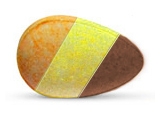Erectile function after prostatectomy
Prostate cancer is one of the most common cancers among men, with millions of men being diagnosed and treated every year. One of the primary treatments for prostate cancer is prostatectomy, or the surgical removal of the prostate gland. While prostatectomy can successfully remove cancer and improve overall health, it can also have significant impacts on erectile function.
Many men experience erectile dysfunction after prostatectomy, leading to a decreased quality of life and potential relationship issues. Understanding the challenges of erectile function after prostatectomy is crucial for men and their partners, as well as for healthcare professionals to provide appropriate support and treatment options.
In this article, we will explore the challenges of erectile function after prostatectomy, including both physical and psychological factors. We will also discuss the various treatment options available, including medication, surgery, and other interventions, to help men regain and improve their erectile function.
Prostatectomy and Erectile Dysfunction
Understanding the Connection
Prostatectomy, or the removal of the prostate gland, is a common treatment for prostate cancer. Unfortunately, along with the removal of the cancerous tissue, prostatectomy often results in damage to the nerves and blood vessels required for erectile function. This damage can cause erectile dysfunction, or the inability to achieve or maintain an erection firm enough for sexual intercourse.
Treatment Options
Thankfully, there are several treatment options available for men who experience erectile dysfunction after prostatectomy. Some of these options include medications such as sildenafil (Viagra), tadalafil (Cialis), and vardenafil (Levitra), as well as penile injections, vacuum devices, and penile implants. It's important to discuss these options with a healthcare professional to determine which is the best fit for each individual case.
The Importance of Communication
It's also important for men who have undergone prostatectomy to discuss any concerns about erectile dysfunction with their partners and healthcare providers. Erectile dysfunction can be a difficult topic to discuss, but it's essential for overall health and well-being. Open communication can lead to improved understanding and better treatment options. Additionally, couples may benefit from seeking counseling or therapy to address any emotional or psychological effects of prostatectomy and erectile dysfunction.
Conclusion
Prostatectomy can be a life-saving treatment for prostate cancer, but it can also result in erectile dysfunction. However, with the right treatment and communication, men can successfully manage this challenge and continue to enjoy a fulfilling sex life.
Causes of Erectile Dysfunction After Prostatectomy
Nerve damage
Prostatectomy surgery can damage the delicate nerves that control erections, which pass close to the prostate. The more extensive the surgery, the greater the risk of nerve damage. Even when nerves are spared during surgery, they may still be injured or inflamed, causing erectile dysfunction.
Reduced blood flow
During a prostatectomy, blood vessels that supply the penis with blood can be damaged. This can lead to reduced blood flow to the penis, which can result in erectile dysfunction. In addition, age-related changes to blood vessels can also contribute to reduced blood flow.
Psychological factors
Prostatectomy surgery can be a traumatic experience, and worrying about a cancer diagnosis can also cause stress. These factors can lead to depression, anxiety, and other psychological issues, which can contribute to erectile dysfunction. In some cases, psychological factors may be the primary cause of erectile dysfunction.
Hormonal changes
The prostate produces hormones that are important for sexual function, and removing the prostate can disrupt hormone levels. This can lead to decreased libido, which can contribute to erectile dysfunction. In addition, some medications used for prostate cancer treatment can also cause hormonal changes that contribute to erectile dysfunction.
Scar tissue
Scar tissue can form as a result of the surgery, and can sometimes impede blood flow to the penis, causing erectile dysfunction. Scar tissue can also cause penis curvature, which can make erections difficult or painful.
Treatment Options for Erectile Dysfunction After Prostatectomy
1. Oral Medications
Oral medications such as sildenafil (Viagra), tadalafil (Cialis), and vardenafil (Levitra) are commonly prescribed for erectile dysfunction after prostatectomy. These medications work by increasing blood flow to the penis, allowing for an erection to occur. It is important to note that these medications may not be effective for everyone and can have side effects such as headaches, flushing, and upset stomachs.
2. Vacuum Erection Devices
Vacuum erection devices (VEDs) are non-invasive devices that use a pump to create a vacuum, which encourages blood to flow to the penis. The vacuum is then released, and a constriction ring is placed at the base of the penis to maintain the erection. While VEDs may not work for everyone, they are usually well-tolerated and have few side effects.
3. Penile Injections
Penile injections use medications such as alprostadil, papaverine, and phentolamine to increase blood flow to the penis and produce an erection. While effective, penile injections can be inconvenient and may cause side effects such as pain, itching, and scarring. They are also not recommended for patients taking blood-thinning medications or those with conditions that affect blood clotting.
4. Penile Implants
Penile implants are surgically implanted devices that allow men to achieve an erection whenever they choose. There are two types of penile implants available: inflatable and malleable. Inflatable implants consist of two cylinders inserted into the penis, a pump placed in the scrotum, and a reservoir of fluid that is inserted into the abdomen. When the pump is activated, fluid flows from the reservoir to the cylinders, creating an erection. Malleable implants are rods that are manually bent to achieve an erection. While penile implants are effective, they are also invasive and carry risks such as infection and device failure.
5. Lifestyle Changes
Lifestyle changes such as regular exercise, maintaining a healthy weight, and quitting smoking can improve erectile function after prostatectomy. Eating a healthy diet that is low in saturated fat and high in fiber can also help improve blood flow and reduce the risk of developing cardiovascular diseases that contribute to erectile dysfunction.
Conclusion
Erectile dysfunction after prostatectomy can be a challenging condition, but there are several treatment options available to men. The choice of treatment will depend on a number of factors, including the severity of the condition, the individual's preferences, and their overall health status. A consultation with a urologist or other healthcare professional can help men make an informed decision about the most appropriate treatment options for their situation.
Non-Surgical Treatment Options for Erectile Dysfunction
Oral Medications
Oral medications such as PDE5 inhibitors (sildenafil, vardenafil, tadalafil, and avanafil) are the most common treatment option for erectile dysfunction. They work by increasing blood flow to the penis, which is necessary for an erection to occur. These medications usually take effect within 30-60 minutes and can last up to 4 hours.
Injections and Suppositories
Another option is injectable therapy, which involves injecting medication directly into the penis. This can help achieve an erection within 5-20 minutes and can last up to an hour. Suppositories, which are inserted into the urethra, can also be used to achieve an erection within 5-10 minutes.
Vacuum Devices
A vacuum erection device (VED) is a non-invasive device that uses a vacuum to draw blood into the penis, creating an erection. This can be a good option for men who do not want to take medication or undergo surgery. However, it can be time-consuming and may require some trial and error to find the right fit.
Lifestyle Changes
Finally, making certain lifestyle changes can also help improve erectile function. This includes maintaining a healthy weight, quitting smoking, reducing alcohol consumption, and exercising regularly. A healthy diet that includes fruits, vegetables, whole grains, and lean protein can also help improve overall health and sexual function.
Surgical Treatment Options for Erectile Dysfunction
Penile Implants
Penile implants involve surgical insertion of devices into the penis that can produce erections. There are two main types of penile implants: inflatable and malleable. Inflatable implants consist of three parts: a reservoir of fluid, a pump, and inflatable cylinders. Malleable implants are semi-rigid rods that can be bent into position for sexual activity. The success rate for penile implants is high, with satisfaction rates ranging from 70% to 90%.
Vascular Surgery
In some cases, vascular surgery may be a treatment option for erectile dysfunction. This involves correcting or repairing damaged blood vessels that supply blood to the penis. The success rate for vascular surgery varies, and it is generally reserved for men who have not responded to other treatments for erectile dysfunction.
Penile Revascularization
Penile revascularization is a surgical procedure that involves redirecting a blood vessel to increase blood flow to the penis. This treatment is generally reserved for men who have had a penile injury or have a vascular condition that is causing erectile dysfunction.
Nerve Grafting
Nerve grafting involves repairing or replacing damaged nerves that control erectile function. This treatment is generally reserved for men who have had a severe penile injury or who have had surgery that has caused nerve damage.
Penile Injection Therapy
Penile injection therapy involves injecting medications into the penis to relax blood vessels and increase blood flow. This treatment can be effective for some men, but it can also cause side effects such as pain, priapism, and scarring.
Conclusion
There are several surgical treatment options for erectile dysfunction, including penile implants, vascular surgery, penile revascularization, nerve grafting, and penile injection therapy. Men who are considering surgical treatment for erectile dysfunction should discuss their options with a qualified healthcare provider to determine the most appropriate treatment for their individual needs and circumstances.
Effective Strategies for Coping with Erectile Dysfunction After Prostatectomy
1. Try Medications
Medications like sildenafil, tadalafil, and avanafil are commonly prescribed to improve erectile function after prostatectomy. These drugs work by increasing blood flow to the penis, allowing for erections to occur. It is important to consult with a healthcare provider before starting any medication.
2. Consider Penile Injections or Suppositories
Penile injections or suppositories containing medications like alprostadil can also be effective in treating erectile dysfunction. These treatments work by increasing blood flow to the penis and producing an erection. However, they may have side effects such as pain or priapism, and require proper administration. It is important to discuss the risks and benefits with a healthcare provider.
3. Explore Vacuum Erection Devices
Vacuum erection devices are non-invasive devices that use a vacuum to draw blood into the penis and produce an erection. These devices can be helpful for men who cannot use medication or who do not want to undergo surgery. They may have some discomfort, but typically do not have significant side effects.
4. Consider Lifestyle Changes
Making lifestyle changes, such as quitting smoking, exercising regularly, maintaining a healthy diet, and reducing stress can all improve overall health and following the recovery process. These changes can also improve erectile dysfunction by improving blood flow and reducing the risk of developing long-term conditions that may cause ED.
5. Seek Support
Coping with erectile dysfunction after prostatectomy can be challenging, but it is important to remember that you are not alone. Seeking support from loved ones, a therapist, or a support group can help manage anxiety, depression, and other emotional challenges. These support can improve quality of life and self-esteem.
6. Consider Surgical Options
Some men may consider penile implants or vascular surgery as an option for managing erectile dysfunction after prostatectomy. Penile implants are devices that are placed inside the penis to produce an erection when desired. Vascular surgery involves repairing arteries to improve blood flow to the penis.
| Treatment | Effectiveness | Side Effects | Patient Satisfaction |
|---|---|---|---|
| Medications | 60% to 70% | Headache, flushing, upset stomach, nasal congestion | 60% to 80% |
| Penile Injections or Suppositories | 80% to 90% | Pain, bruising, priapism | 70% to 80% |
| Vacuum Erection Devices | 65% to 75% | Discomfort, pulling sensation | 60% to 70% |
| Penile Implants | 90% to 95% | Infection, device malfunction | 75% to 80% |
| Vascular Surgery | 50% to 60% | Pain, infection, recurrence of ED | 50% to 60% |
Follow us on Twitter @Pharmaceuticals #Pharmacy
Subscribe on YouTube @PharmaceuticalsYouTube





Be the first to comment on "Erectile function after prostatectomy"